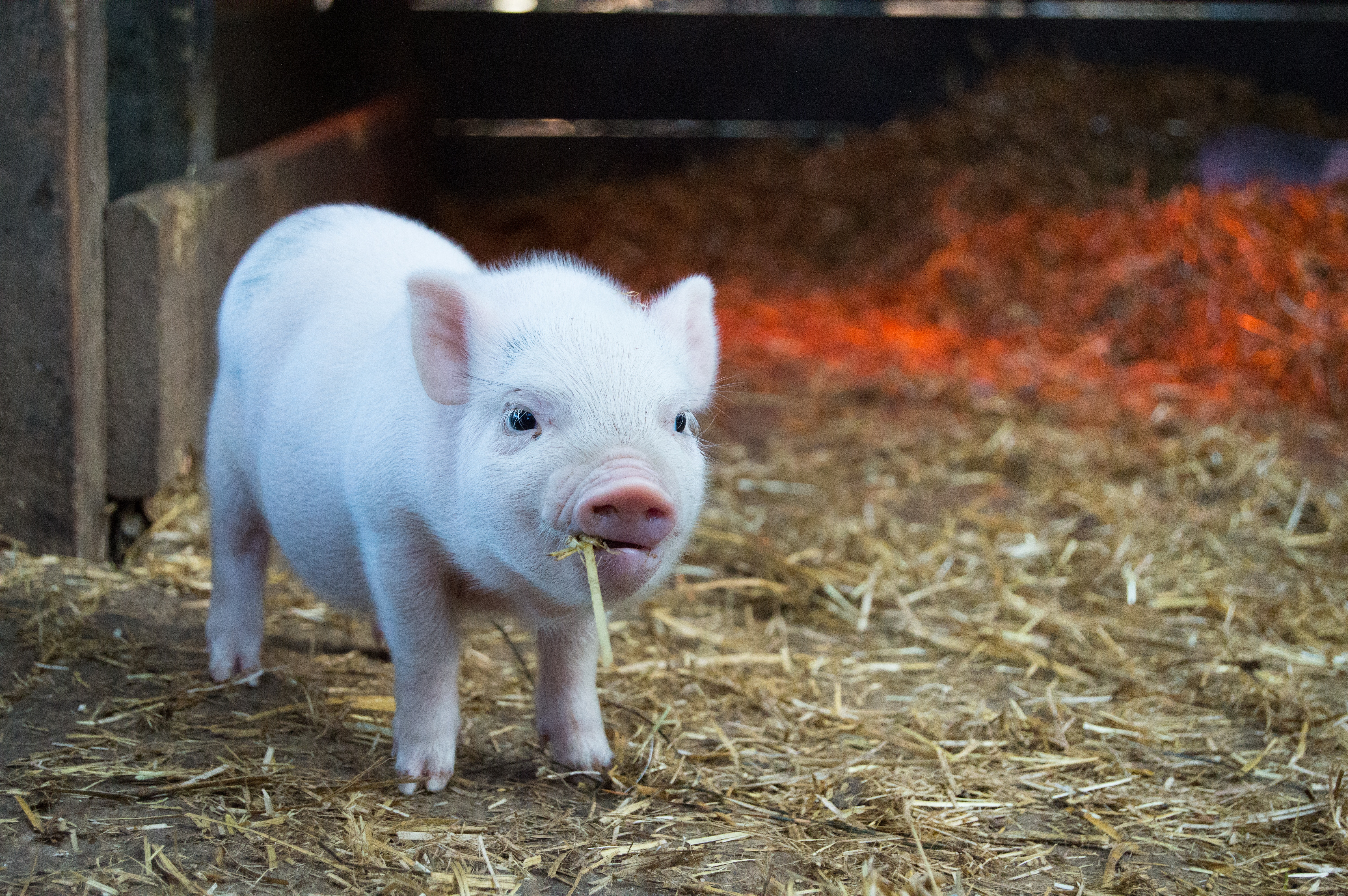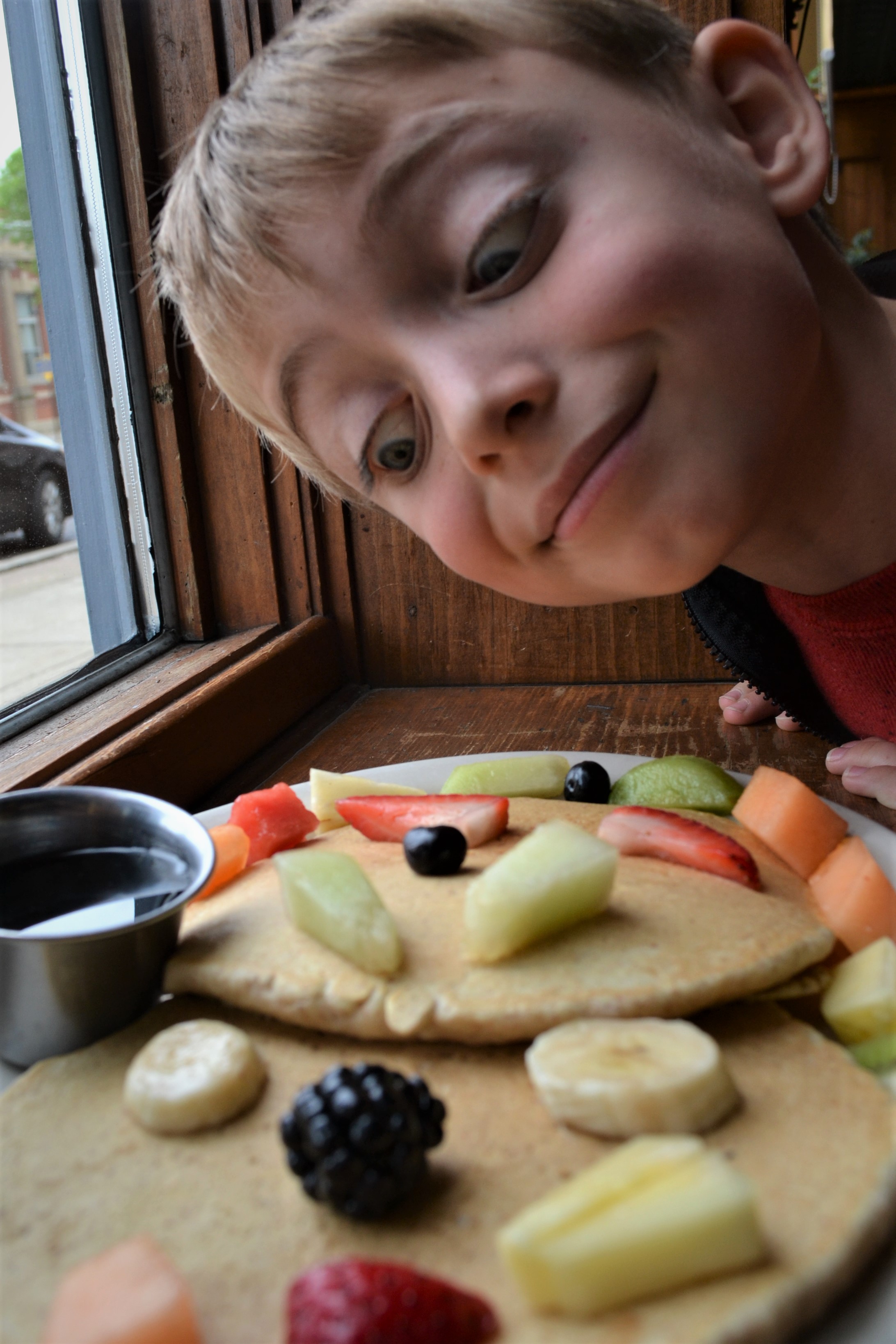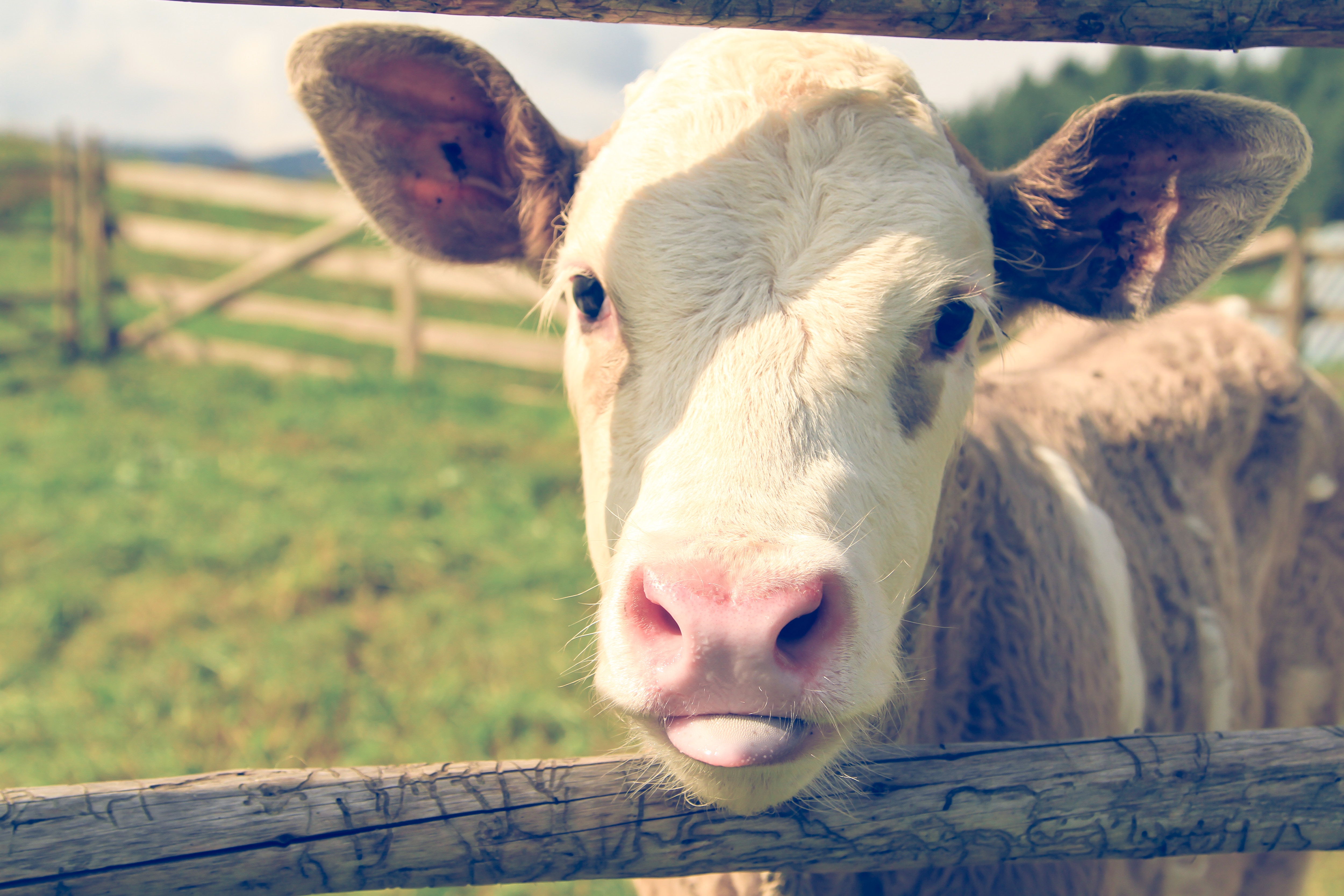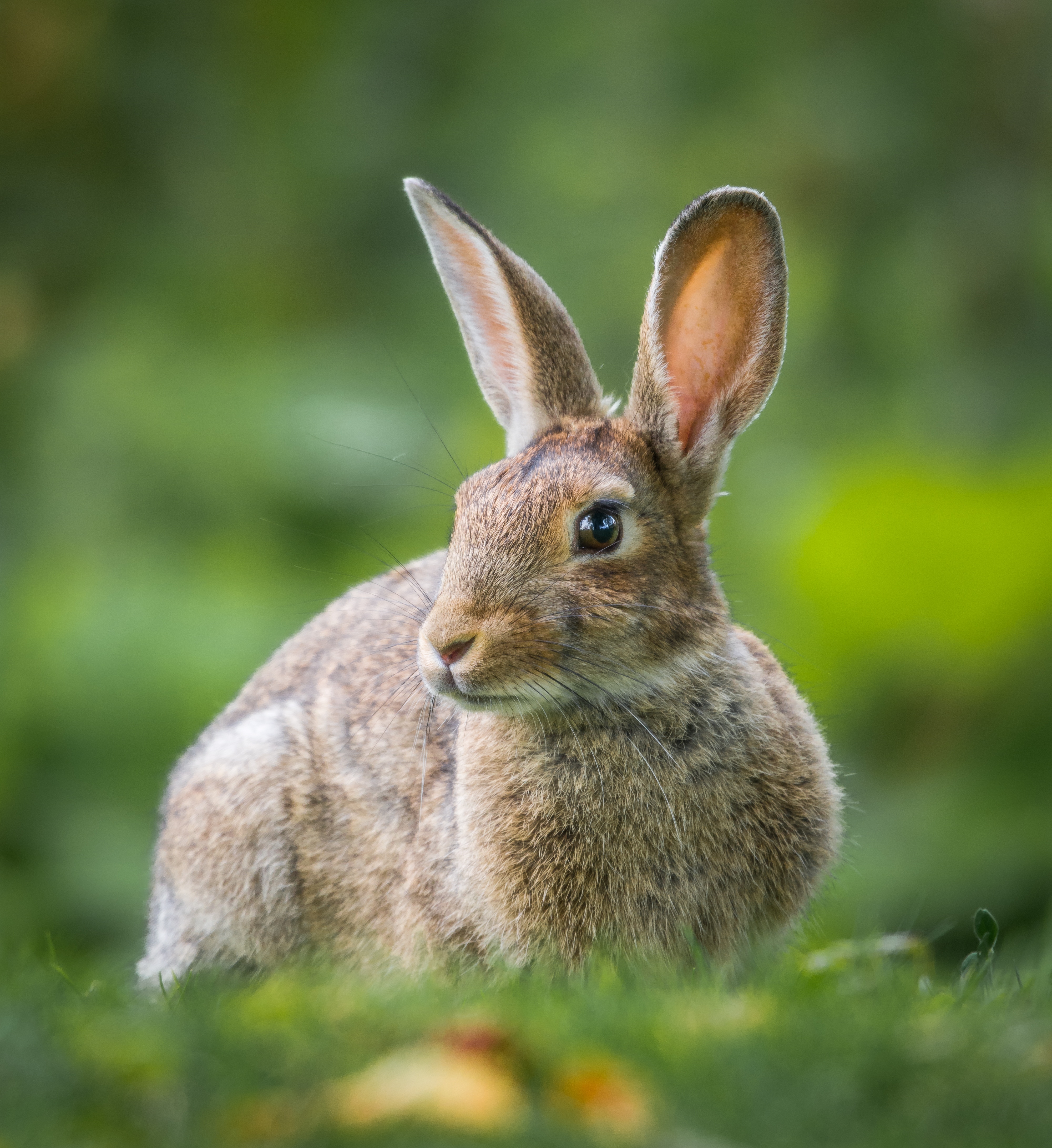
Select Page
Ahimsa lights the way

(click for response)
If this is a nutritional question, check out books AVS recommends in that category. If this is a practical application question, try new vegan items each time you go shopping. Each week try one new fruit, one new whole grain, one new vegetable, one new legume, and even one new packaged food until you feel like you have found an abundance of vegan food you enjoy. Remember this is a good time to be social and adventurous with cuisine. Try a different restaurant. Exchange meals with another vegan. Form a potluck group or a dinner co-op that gathers at
There are no truly humane ways to exploit animals for their flesh and secretions. As undercover operations have revealed, claims on the packaging that animal products are “compassionate” often bear little relation to reality. And even on the most “humane” farms, animals are slaughtered at only a fraction of their lifespans. In the rare case that an animal has lived a relatively good life prior to slaughter, there is “betrayal involved in raising an individual to feel loved and valued and then slaughtering her as a resource in the end.” Consuming dairy, eggs, and flesh, however marketed, supports violence against animals. –Sherry F. Colb, author of Mind If I Order the Cheeseburger? And Other Questions People Ask Vegans
Try getting your protein from concentrated satisfying sources such as beans and nuts. A good whole grain bread can be satisfying too. –Freya Dinshah, coauthor Apples, Bean Dip, and Carrot Cake.
You might opt to try some vegan meat analogs if you miss the familiarity of burgers and dogs. There are more and more of them becoming available now in most supermarkets. It’s actually more often the seasonings and sauces on the meat that one misses. Meanwhile, develop your tastes for less processed options. Try using mushrooms, tofu, tempeh, eggplant, and other plant foods that have meaty textures. –Anne Dinshah, coauthor Apples, Bean Dip, and Carrot Cake.
Eat plant meat. Real men are caring and compassionate. They are strong and take a stand to protect innocent animals. Increasingly I hear people say vegan is sexy. –Anne Dinshah, American Vegan magazine managing editor.
There are great vegan cheese recipes in The UnCheese Cookbook by Jo Stepaniak, Artisan Vegan Cheese by Miyoko Schinner, and The Cheesy
Try the vegan “seafood” from Sophie’s Kitchen, which uses sea plants such as konjac to create a wide array of seafood such as calamari, fish, shrimp, crabcakes, tuna, and scallops. It’s better for you, and better for the ocean, and better for the fish. Put your dollars towards a company that is truly into sustainability. Or go the healthier way and learn to make things yourself using sea vegetables such as
Nuts and beans are two of the most common sources of vegan protein. However, most people are overly concerned with protein, which we get abundantly if eating a good variety of plant foods. Nuts are important, but they are also a common allergen and it is quite easy to get vegan food without nuts. I’m personally allergic to peanuts and it used to be difficult, but nowadays products are marked to caution for nuts. Be in the habit of asking if anything has nuts when you dine socially, just like you would ask if something is vegan. It’s acceptable to do so these days. –Anne Dinshah, author Healthy Hearty Helpings
It all depends on who makes them. There are many vegan bakeries offering desserts that you really can’t tell the taste difference. I actually find some are just too decadent for me. Be sure you aren’t confusing vegan with gluten-free which for many bakers are still experimental. Some vegan desserts are also planned to be healthier, not just nonanimal. Give it some time, you might find your taste buds begin to prefer lighter flavors that aren’t weighed down with all the eggs, milk, butter, and cream. Check out our cookbook section of the AVS book catalog. You may enjoy making desserts yourself and knowing they are made without harming animals can be more satisfying in other ways. –Anne Dinshah, AVS Speakers Bureau
What are your three favorite vegetables? Now ask a friend the same question.
Try more restaurants: Ask the waitstaff questions in a pleasant way as they are not responsible for the menu but can help you. Ask if there are any vegan items on the menu. If there are not, ask if the chef has a dish for vegans that is not on the menu. If you still don’t get an acceptable response, ask politely if it is possible to speak with the chef. Or you might approach the menu as if it were your home pantry. Look at the sides first and ask about those. Also try ethnic restaurants: Asian (rice and vegetables), Middle Eastern (hummus, baba
It is important to learn about the bounty of plant foods before or simultaneous to eliminating all animal foods. That’s why the Vegan Generation3 campaign encourages learning about veganism from three different sources. If you picked three sources that provided the “why” now focus on “how” with a vegan friend who helps you go food shopping or share some meals. See the AVS VIP list. Choose a very easy vegan cookbook from the Recommended Reading for New Vegans. –Anne Dinshah VG3 Campaign Director
Adults are secretly learning to cook with the book Apples, Bean Dip, and Carrot Cake: Kids! Teach Yourself to Cook. (available from AVS) –Victoria Moran, author Main Street Vegan
We can reach the goal that in this imperfect world may not be complete perfection but doing the best we possibly can. We will not reach the goal if we say, “Veganism is a very nice ideal, but not very practical or profitable, so I won’t bother with it at all until…” And here we may insert, “the world is ready for it” or “next year/ month/ week/ lifetime/ world/ or you name it” or “I am better able to do so” or “the next fellow does it” or any other convenient and equally spurious excuse for sitting back and doing absolutely nothing. An intelligently planned, progressive program of nonanimal utilization is a very fine way to begin. –H. Jay Dinshah, coauthor Powerful Vegan Messages
There’s a great book Never Too Late to Go Vegan: The Over-50 Guide to Adopting and Thriving on a Plant-Based Diet by Carol J. Adams, Patti Breitman, and Virginia Messina available from AVS. –Carolyn Githens, American Vegan graphics manager and assistant editor
Dilemmas are the positive and negative sides of action and how we live our lives. Imagine that we jumped right to being vegan. Then we learn about some of these peripheral problem areas. If we say we’re going to eliminate all animal products from our diet, our clothes, cosmetics, and such. What about the leather belt on the machinery that made this all-manmade-material pair of shoes? Or you go to the supermarket and buy something in the produce department; with your support of the supermarket, you’re helping to pay the checkout clerk who buys some meat. Is that your fault, your exploitation and killing of animals? Do you withdraw from humanity?
You might be practicing to the limit—or even to excess in effect—the negative, passive side of ahimsa (
–adapted from the writings of H. Jay Dinshah in Powerful Vegan Messages which includes an extensive discussion of ethical dilemmas
Vegans refuse both food and clothing from animals because it all involves slavery, suffering, deprivation, exploitation, and killing of the animals. But what is the harm in using up some animal-based clothing or food you already have? We should consider the effects on the user, on others, and on the animals of various choices of actions. You can follow one of three plans:
These options are discussed in detail in Powerful Vegan Messages. –H. Jay Dinshah, founder of American Vegan Society
I didn’t like that feeling either because I didn’t want to have people go out of their way to do anything special for me. People feel uncomfortable when they don’t know what to serve that I can eat. Sometimes I would eat a little something before going to an event. Now I offer to bring a vegan dish and share it with everyone. –Carolyn Githens, American Vegan graphics manager and assistant editor
I’ve had people secretly hide animal products in my food and say it was vegan. You can choose to call them out on it or eat elsewhere. I would opt to be understanding. They feel threatened because you are doing something that is different from what they believe/ learned/ know. Have patience and know that you are now part of your chosen family, the vegan community who are available to be supportive. Contact an AVS Vegan Information Point for suggestions in your neighborhood. –Anne Dinshah, campaign director for Vegan Generation3
Learn to make at least two good main dishes and two desserts so you have a choice of what to bring to impress people at social events. Veganize your favorites or try a new vegan recipe. When people taste how delicious vegan food can be, begin to ask you genuinely inquisitive questions. Depending on the event, people often don’t know it’s vegan until after they eat the vegan dish and rave about it. Perhaps you will generate positive curiosity about veganism and can encourage others to become Vegan Explorers. –Anne Dinshah, author Dating Vegans
Coming from a culture whose meals centered mainly around pork and chicken, I was ridiculed and had animal products hidden in my food by
Compromise on the color of paint on kitchen walls, the type of music to listen to while eating, or the type of plates, but NOT on your compassionate core values. You will learn what’s truly important and your veganism is probably one of the things the person admires in you.–Anne Dinshah, author Dating Vegans
Call ahead and talk with the catering personnel. Ask the chefs if they can offer vegan options. Email them the AVS catering guide from AmericanVegan.org. Be appreciative of their efforts and they will be helpful. Remember veganism is becoming more popular and you are helping them adjust to the increasing interest. –Freya Dinshah, AVS Speakers Bureau
My friend Inger Lonmo is a world traveler who suggests packing a travel kit with snack bags such
Inger created a chart that solves the problem. Not only does it bring a smile, but it clears any confusion. She drew all the animals, fish, milk, and eggs, then crossed them off with a red X. You
You can still eat burgers, fries, and cookies. Just have the vegan ones from plants. Remember to eat your healthy veggies and bean wraps! And tell kids you are kind to animals. Animals deserve to have fun too! –Clint Dinshah, lifelong vegan kid
Get the book Apples, Bean Dip, and Carrot Cake: Kids! Teach Yourself to Cook by Anne and Freya Dinshah available from AVS.
Many animal products are subsidized by the government so you are not paying the true cost. When you factor in the health costs of the diseases associated with animal products, think of plant-foods as purchasing true “health insurance.”
If you buy a lot of processed plant foods, it may be expensive. Try buying whole grains and legumes from bulk bins. If organic produce is driving up the cost, then get to know the “dirty dozen” and focus on buying those organic even if you compromise and get some of the “clean fifteen” grown conventionally. Consider joining a CSA (community supported agriculture) for good local organic produce in season. –Anne Dinshah, lifelong vegan





56 Dinshah Drive, Malaga NJ 08328 856.694.2887
Copyright © 1960-2024
AVS is a registered 501(c)(3) organization, EIN 226058533. All donations made to the American Vegan Society are tax deductible in accordance with applicable law..